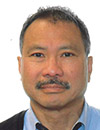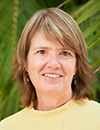Plenary Event
Wednesday Plenary
19 June 2024 • 08:30 - 10:00 Japan Standard Time | National Convention Hall, 1F
Session Chair
8:30 to 9:15
Euclid mission: first year of operations
After launch on 1 July 2023, the Euclid space telescope of the European Space Agency (ESA) has begun its 6-year mission designed to understand the origin of the Universe's accelerating expansion, which is commonly associated with Dark Energy. By observing billions of galaxies, Euclid will create a 3-dimensional map of the Universe covering 10 billion years of cosmic history. It contains the hierarchical assembly of (dark) matter in galaxies, clusters and superclusters telling us about the nature of gravity and giving us a detailed measurement of the accelerated expansion of the Universe in time. The stringent image quality and sky survey requirements impose extreme performances of the telescope, instruments, and spacecraft. After a mission summary, I will describe the in-orbit spacecraft and instrument performances. A notable challenge is the processing of the large volume of data. The scientific prospects of Euclid are illustrated with the first images and early science results.
René Laureijs is ESA scientist at the European Space and Technology Centre (ESTEC) in Noordwijk, the Netherlands. He supported the development and scientific data analysis of several astronomical satellites and missions, starting with the Infrared Astronomical Satellite (IRAS), and subsequently the Infrared Space Observatory (ISO) and ESAs cosmic microwave background mission Planck. He has been involved in Euclid since 2007, first as the ESA study scientist, later, after the Euclid mission adoption in 2012, as the ESA project scientist.
The Ultraviolet Explorer (UVEX) mission, scheduled for launch in 2030, advances three scientific pillars: exploring the low-mass, low-metallicity galaxy frontier; providing new views of the dynamic universe, and leaving a broad legacy of modern, deep synoptic surveys adding to the panchromatic richness of 21st century astrophysics. The UVEX instrument consists of a single module with simultaneous FUV and NUV imaging over a wide (10 sq. deg) FOV and sensitive R>1000 spectroscopy over a broad band from 1150 - 2650 Angstroms. In this talk I will describe the UVEX scientific program and provide an overview of the instrument and mission.
Fiona Harrison is the Harold A. Rosen Professor of Physics, and Kent and Joyce Kresa Leadership Chair of the Division of Physics, Mathematics and Astronomy. Her research focuses on understanding some of the hottest, densest, and most energetic phenomena in the universe, as well as developing advanced detectors and instrumentation for future space missions.
MENU: Coffee, decaf, and tea will be available outside the presentation room.
SETUP: Theater style seating. .
 |
Sarah Kendrew
European Space Agency (United States) |
8:30 to 9:15
Euclid mission: first year of operations
 |
René Laureijs
European Space and Technology Centre (ESTEC) (The Netherlands) |
After launch on 1 July 2023, the Euclid space telescope of the European Space Agency (ESA) has begun its 6-year mission designed to understand the origin of the Universe's accelerating expansion, which is commonly associated with Dark Energy. By observing billions of galaxies, Euclid will create a 3-dimensional map of the Universe covering 10 billion years of cosmic history. It contains the hierarchical assembly of (dark) matter in galaxies, clusters and superclusters telling us about the nature of gravity and giving us a detailed measurement of the accelerated expansion of the Universe in time. The stringent image quality and sky survey requirements impose extreme performances of the telescope, instruments, and spacecraft. After a mission summary, I will describe the in-orbit spacecraft and instrument performances. A notable challenge is the processing of the large volume of data. The scientific prospects of Euclid are illustrated with the first images and early science results.
René Laureijs is ESA scientist at the European Space and Technology Centre (ESTEC) in Noordwijk, the Netherlands. He supported the development and scientific data analysis of several astronomical satellites and missions, starting with the Infrared Astronomical Satellite (IRAS), and subsequently the Infrared Space Observatory (ISO) and ESAs cosmic microwave background mission Planck. He has been involved in Euclid since 2007, first as the ESA study scientist, later, after the Euclid mission adoption in 2012, as the ESA project scientist.
9:15 to 10:00
The ultraviolet explorer: new views of the UV universe
 |
Fiona Harrison
Caltech (United States) |
The Ultraviolet Explorer (UVEX) mission, scheduled for launch in 2030, advances three scientific pillars: exploring the low-mass, low-metallicity galaxy frontier; providing new views of the dynamic universe, and leaving a broad legacy of modern, deep synoptic surveys adding to the panchromatic richness of 21st century astrophysics. The UVEX instrument consists of a single module with simultaneous FUV and NUV imaging over a wide (10 sq. deg) FOV and sensitive R>1000 spectroscopy over a broad band from 1150 - 2650 Angstroms. In this talk I will describe the UVEX scientific program and provide an overview of the instrument and mission.
Fiona Harrison is the Harold A. Rosen Professor of Physics, and Kent and Joyce Kresa Leadership Chair of the Division of Physics, Mathematics and Astronomy. Her research focuses on understanding some of the hottest, densest, and most energetic phenomena in the universe, as well as developing advanced detectors and instrumentation for future space missions.
Event Format
FORMAT: General session with live audience Q&A to follow each presentation.MENU: Coffee, decaf, and tea will be available outside the presentation room.
SETUP: Theater style seating. .
